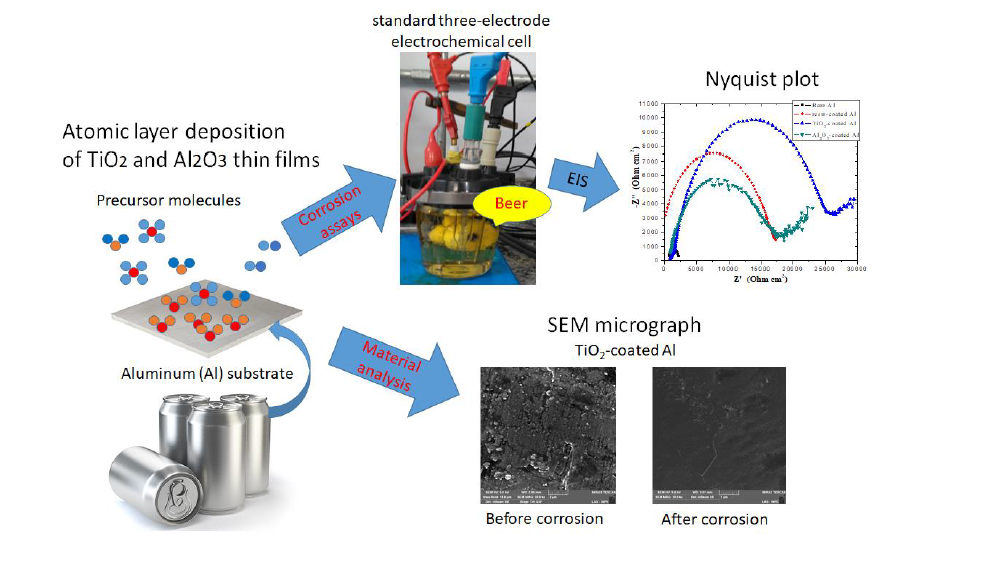Titanium dioxide (TiO2) and aluminum oxide (Al2O3) coatings have been investigated in a wide range of bio-applications due to their biodegradation and biocompatibility properties, that are key parameters for their use in the food packaging and biomedical devices fields. The present study evaluates and compares the electrochemical behavior of the non-coated, commercial resin-coated, TiO2-coated and Al2O3-coated aluminum in commercial beer electrolyte. For this, TiO2 and Al2O3 thin films were deposited on aluminum (Al) substrates using atomic layer deposition (ALD). The evaluation of the corrosion barrier layer properties was performed by linear sweep voltammetry (LSV) and electrochemical impedance spectroscopy (EIS). In addition, profilometry, grazing incidence X-ray diffractometry (GIXRD), scanning electron microscopy (SEM) and Fourier-transform infrared spectroscopy (FT-IR) analyses were performed to investigate the physical and chemical properties of the pristine and / or corroded samples. TiO2 and Al2O3 films presented an amorphous structure, a morphology that follows Al substrate surface, and a thickness of around 100 nm. Analysis of LSV data showed that ALD coatings promoted a considerable increase in corrosion barrier efficiency being 86.3% for TiO2-coated Al and 80% for Al2O3-coated Al in comparison with 7.1% of commercial resin-coated Al. This is mainly due to the lower electrochemical porosity, 11.4% for TiO2-coated Al and 20.4% for Al2O3-coated Al in comparison with 96% of the resin-coated Al, i.e. an increase of up to twofold in the protection of Al when coated with TiO2 compared to Al2O3 coated. The EIS results allow us to complement the discussions about the reduced corrosion barrier efficiency of the Al2O3 film for beer electrolyte once SEM and FT-IR analyzes did not show drastic changes in both investigated ALD films after the corrosion assays. The above results indicate that ALD TiO2 and Al2O3 films may be a viable alternative to replace the synthetic resin coatings frequently used in aluminum cans of use in the food industry.

